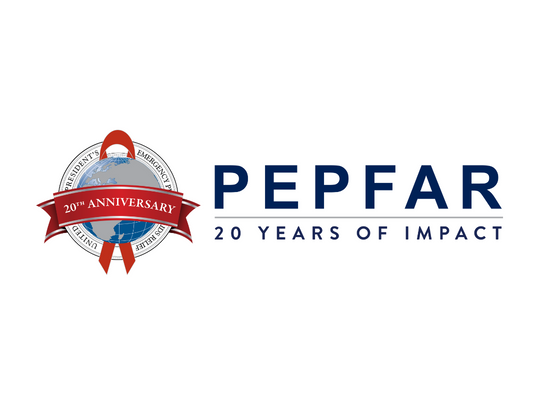
PEPFAR AIDS Relief — 20 Years Later
In 2003, when the George W. Bush presidential administration announced its public health campaign to help reduce the burden of AIDS, it was seen as ambitious. The U.S. President’s Emergency Plan for AIDS Relief (PEPFAR) is still “the largest commitment by any nation to address a single disease,” according to a report by the U.S. Centers for Disease Control and Prevention (CDC). At the time of its proposal, PEPFAR was designed to help improve the health inequities in AIDS and STI prevention, specifically on the African continent.
As this successful public health program celebrates its 20th anniversary, public health communicators and professionals should be aware of the legacy of the program, including its challenges and successes, the biggest takeaways, and what lies ahead on the horizon.
What Is PEPFAR?
The PEPFAR program was conceived to help increase access to HIV antiretroviral therapy (ART) across the world and specifically on the African continent. When taken consistently, ART medications help suppress the viral load of people with the HIV virus, effectively curbing the transmission of the virus. However, the ART medication was very expensive at the time of PEPFAR’s implementation, so increasing its availability was lofty and required a good amount of coordination and advocacy across the political spectrum.
At the outset, the PEPFAR program had the following specific aims:
- To prevent 7 million infections
- To treat 2 million people
- To provide compassionate care to 10 million people suffering from AIDS and the children who had become orphans due to the AIDS epidemic
When these initial objectives were outlined, 30 million people were living with HIV in Africa, but only 50,000 were receiving ART therapy, the equivalent of 0.1%, according to the CDC.
Challenges and Successes of PEPFAR
One of the challenges of PEPFAR was the initial skepticism garnered by the plan. In 2003, HIV ART medications cost approximately $10,000 annually for each patient, according to a recent report by the George W. Bush Presidential Center. These medicines also had to be taken at specific times, with food, which cast doubt over the feasibility of increasing their uptake and accessibility on the African continent.
One of the biggest successes of PEPFAR is that in its 20 years of implementation, the program has increased ART therapy to 20 million people living with HIV infections in 54 different countries. According to the CDC, during the 2015 to 2022 time period alone, viral load suppression rates increased from 80 percent to 95 percent. The program also helped develop treatment infrastructure for other large-scale public health campaigns, paving the way for the management of other public health crises, such as the COVID-19 pandemic.
After 20 Years, What Are the Biggest Takeaways of PEPFAR?
One of the biggest takeaways of the success of the PEPFAR program is simply the astounding power that is possible when a coordinated effort is undertaken across government departments and agencies. Investing in these sorts of public health initiatives can have drastic implications for not only national health but also for the health of the global population. The efforts that supported PEPFAR have led to “sustained declines in all-cause mortality,” according to a recent MMWR report by the CDC. The program has also helped avoid hundreds of thousands of HIV-related deaths in its inaugural country of Uganda.
The value of setting clear metrics is also crystallized in examination of the legacy of the PEPFAR program. Because the program had set specific targets, it was easy to track its progress and also made the program highly visible to leadership, which would reportedly frequently check in about how it was faring compared to the timeline.
What Comes Next for PEPFAR?
The PEPFAR program supports the fast-track strategy of the Sustainable Development Goals and the Joint United Nations Programme on HIV/AIDS, which deems to eliminate AIDS as a global threat by 2030. This strategy aims to have 95% of HIV-infected persons aware of their status, 95% of those with known HIV on ART therapy, and 95% of those achieving suppression of their viral loads.
Although much progress has been made, there are still 1.5 million new AIDS infections each year, according to the CDC. Additionally, in a recent year, of the 38.4 million people estimated to have HIV infections worldwide, only 28.7 million of these are receiving ART therapy, with 92% of those achieving viral load suppression. Clearly, there is still work to be done. According to the CDC, “PEPFAR remains committed to supporting partner governments to eliminate HIV as a global public health threat while strengthening public health systems and global health security.”
Research and materials for this article were compiled, written, and distributed on behalf of the National Public Health Information Coalition. The views and opinions expressed in this blog are those of the various authors and do not necessarily reflect the official policy or position of the National Public Health Information Coalition or its members.
Sources
[1] Vital Signs: Progress Toward Eliminating HIV as a Global Public Health Threat Through Scale-Up of Antiretroviral Therapy and Health System Strengthening Supported by the U.S. President’s Emergency Plan for AIDS Relief — Worldwide, 2004–2022. https://www.cdc.gov/mmwr/volumes/72/wr/mm7212e1.htm
[2] How PEPFAR, the ‘genius plan,’ came together to save 25 million lives. https://www.bushcenter.org/publications/how-pepfar-the-genius-plan-came-together-to-save-25-million-lives
[3] A look at PEPFAR’s legacy: 20 years of fighting AIDS. https://www.npr.org/2023/03/18/1164565617/a-look-at-pepfars-legacy-20-years-of-fighting-aids

